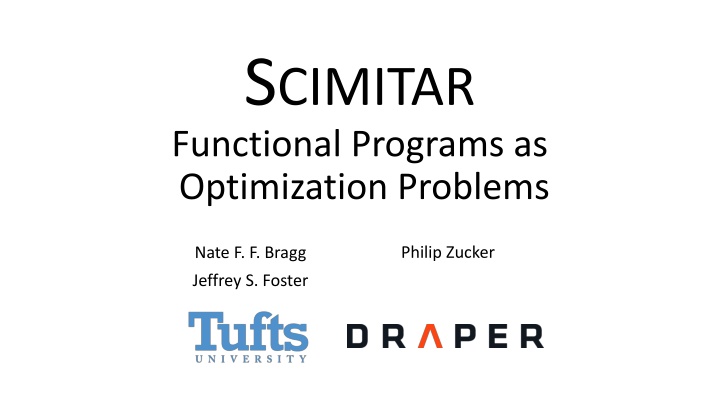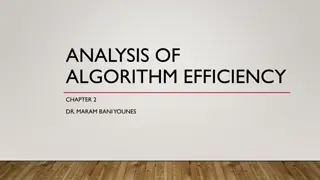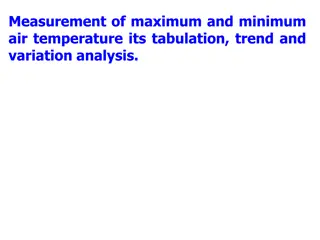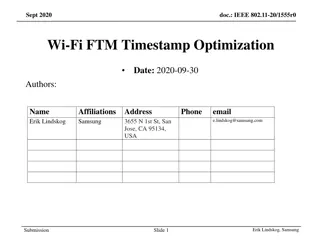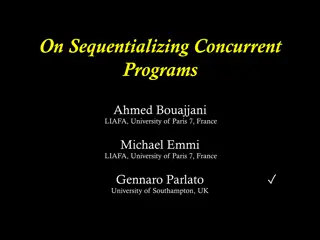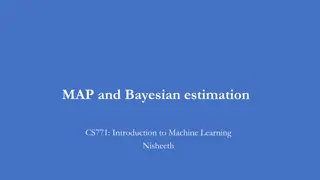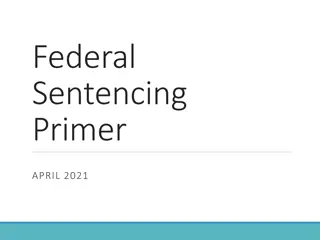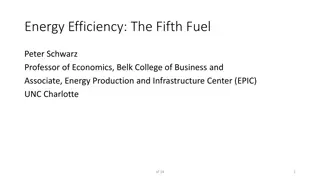Optimizing Programs with SCIMITAR for Maximum Efficiency
SCIMITAR combines optimization and functional programming to tackle algorithmic problems efficiently. By integrating MILP directly, SCIMITAR reduces semantic coupling and yields optimal results in domains like logistics, control, and resource allocation. The approach enhances maintainability and performance, offering a better solution than traditional ad-hoc or greedy methods. Mathematical optimization techniques and expert encodings play a crucial role in achieving the desired outcomes.
Download Presentation

Please find below an Image/Link to download the presentation.
The content on the website is provided AS IS for your information and personal use only. It may not be sold, licensed, or shared on other websites without obtaining consent from the author.If you encounter any issues during the download, it is possible that the publisher has removed the file from their server.
You are allowed to download the files provided on this website for personal or commercial use, subject to the condition that they are used lawfully. All files are the property of their respective owners.
The content on the website is provided AS IS for your information and personal use only. It may not be sold, licensed, or shared on other websites without obtaining consent from the author.
E N D
Presentation Transcript
SCIMITAR Functional Programs as Optimization Problems Philip Zucker Nate F. F. Bragg Jeffrey S. Foster
When Only the Best Will Do Algorithms need optimal values, settle for acceptable Domains: logistics, control, resource allocation, CAD Approaches like ad-hoc, greedy, high watermark Often suboptimal, hard to specify some constraints Business logic/constraints mixed, less maintainable Better approach: Optimization solvers SCIMITAR = Optimization + Functional programming 1
Example: sum-to-n Goal: minimize the value to sum to Defines recursive function sum-to-n Constrains result >= 100 Recursively adds to result until n = 0 Result is 14 2
Mathematical Optimization Get the best value of cost func s.t. constraints: max f(x) s.t. gi(x) = 0 i LP has linear cost func/constraints MILP uses real and integer vars Many efficient off-the-shelf solvers are available E.g., Gurobi, CPLEX, Coin-OR CBC, etc. 3
Optimization Expert Encodings Expert encodings Expressive Unmaintainable (e.g., Bools, *, ITE) Code changes: easy, MILP constraint changes: hard * expands to O(log c + log x) constraints Vector ref expands to O(length(v)) constraints lambda inlined up to some user defined limit if-then-else expands asserts to PC, O(assert depth) 4
Solver Aided Languages Existing langs include SWI-Prolog, Dafny, Rosette These focus on SMT or similar decision procedures Target applications are therefore quite different Often send problems to efficient OTS solvers They yield satisfying results, not optimal ones 5
SCIMITAR: Functional Optimization Integrates MILP directly into a scheme-like language Compiler written in Racket, solver is Gurobi Expert encodings are performed automatically Semantic coupling is reduced as compared to MILP Yields optimal results, not just satisfying 6
Example: Arena Allocate Allocator, e.g., malloc Tracks free memory A common approach on limited platforms is to use a bucket-based arena Fast, but tradeoff is must sometimes be rebalanced We want the optimal way to rebalance 7
Example: Update-Arena-Dist Computes new arena 8
Example: Update-Arena-Dist Computes new arena Call solver via minimize, optimum-ref terms that collect asserts, compile, and solve 9
Example: Update-Arena-Dist Computes new arena Call solver via minimize, optimum-ref terms that collect asserts, compile, and solve Mins mem-usage, gets optimal-arena 10
Example: Update-Arena-Dist Computes new arena Call solver via minimize, optimum-ref terms that collect asserts, compile, and solve Mins mem-usage, gets optimal-arena Easily add asserts to ITE 11
Host-solver Boundary Shifts from usual semantics to solver semantics Host Solver: concrete variables are frozen Solver Host: symbolic variables are frozen 1 0 0 1 0 1 1 -1 0 0 1 0 -1 0 Solver Language 0 minimize Compiler Solver Host 1 Language 12
Multiplication: McCormick Envelopes ??= 0, ? ? 0 ? + ? 2 0 2 = 2? ? ? 1 ? + ? 2 1 2 = ? + 2? 2 ? ? 0 ? + ? 2 0 2 = 2? ? ? 1 ? + ? 2 1 2 = ? 2? + 2 ??= 1, ??= 2, ??= 2 13
Benchmarks To demonstrate, we implemented several benchmarks Classic optimization problems: pipes and logistics Real world problems: malloc Minimize data shape and values together: recitation Others: contradict, bounce, sum-to-n 14
Benchmark Visualization 15 Flow diagram by George Flonkerton - Own work, CC BY-SA 4.0, https://commons.wikimedia.org/w/index.php?curid=83846144
Methods Our goal: give evidence of MILP solver benefits over more generic approach offered by SMT solvers SCIMITARvs Rosette Gurobi vs Z3 Overall time is split between avg compile and solve Differences in performance: SCIMITAR encodes at compile time, gives Gurobi a matrix Rosette compiles to smtlib2, Z3 does encoding 16
Analysis Compiler dominates SCIMITAR, Z3 dominates Rosette MILP performance is (usually) better Some exceptions, e.g., pipes Scales well in target domains, supporting our claim Problem size corresponds to compile/solve times Racket impl is slow a C rewrite would be faster 18
Summary SCIMITAR: optimization-aided functional programming Reduced coupling modeling constrained problems Expert encodings for non-experts MILP solver outperforms general SMT approach Targets traditional optimization problems, control, resource allocation, code gen, design optimization 19
